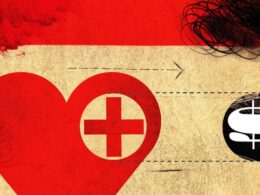This is a republication of the abstract of the paper below, with the title above, highlighting the topic in question.
Moving the Brazilian ischaemic stroke pathway to a value-based care: introduction of a risk-adjusted cost estimate model for stroke treatment
Oxford Academic
Health Policy and Planning
Ana Paula Beck da Silva Etges, Miriam Allein Zago Marcolino, Leonardo Alves Ogliari, Ana Claudia de Souza, Bruna Stella Zanotto, Renata Ruschel, Juliana Safanelli, Pedro Magalhães, Henrique Diegoli, Karina Tavares Weber, Ana Paula Araki, Altacílio Nunes, Octávio Marques Ponte Neto, Junaid Nabi, Sheila Ouriques Martins, Carisi Anne Polanczyk
22 July 2022
Key messages summarized by:
Joaquim Cardoso MSc.
health transformation . institute
vbhc unit
May 29, 2022
Healthcare delivery systems can generate local cost information to support value-based reimbursement strategies employing the data collection instruments and analysis developed in this study.
- Value-based healthcare requires detailed comprehension of cost information at the patient level.
- This study introduces a clinical risk- and outcome-adjusted cost estimate model for stroke care sustained on time-driven activity-based costing (TDABC).

Abstract
What is the problem?
- The unsustainable increases in healthcare expenses and waste have motivated the migration of reimbursement strategies from volume to value.
- Value-based healthcare requires detailed comprehension of cost information at the patient level.
What is the scope of the paper?
- This study introduces a clinical risk- and outcome-adjusted cost estimate model for stroke care sustained on time-driven activity-based costing (TDABC).
- In a cohort and multicentre study, a TDABC tool was developed to evaluate the costs per stroke patient, allowing us to identify and describe differences in cost by clinical risk at hospital arrival, treatment strategies and modified Rankin Score (mRS) at discharge.
How was the process?
- The clinical risk was confirmed by multivariate analysis and considered patients’ National Institute for Health Stroke Scale and age.
- Descriptive cost analyses were conducted, followed by univariate and multivariate models to evaluate the risk levels, therapies and mRS stratification effect in costs.
- Then, the risk-adjusted cost estimate model for ischaemic stroke treatment was introduced.
- All the hospitals collected routine prospective data from consecutive patients admitted with ischaemic stroke diagnosis confirmed.
What are the findings?
- A total of 822 patients were included. The median cost was I$2210 (interquartile range: I$1163–4504).
- Fifty percent of the patients registered a favourable outcome mRS (0–2), costing less at all risk levels, while patients with the worst mRS (5–6) registered higher costs.
- Those undergoing mechanical thrombectomy had an incremental cost for all three risk levels, but this difference was lower for high-risk patients.
- Estimated costs were compared to observed costs per risk group, and there were no significant differences in most groups, validating the risk and outcome-adjusted cost estimate model.
Conclusions:
- By introducing a risk-adjusted cost estimate model, this study elucidates how healthcare delivery systems can generate local cost information to support value-based reimbursement strategies employing the data collection instruments and analysis developed in this study.
… healthcare delivery systems can generate local cost information to support value-based reimbursement strategies employing the data collection instruments and analysis developed in this study.
Nomenclature
VBHC: Value Based Health Care
TDABC: Time Driven Activity Based Costing
Originally published at: https://academic.oup.com












